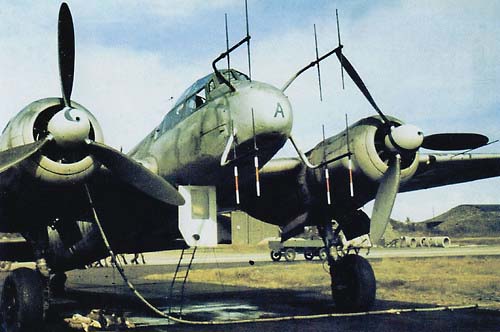According to author Robert C Stern in his fascinating book “Fire from the Sky”, the very last hit by a kamikaze was in Buckner Bay on August 13th 1945 on the attack transport USS Lagrange (APA 124). Work on building the Lagrange began on September 1st 1944 and the ship was ready by November 11th. The quick workers were the California Shipbuilding Corporation of Wilmington, California and the captain was Frank R. Walker. Here’s Captain Walker:
And here is the Lagrange :
It was a Haskell class ship, and all of them looked very similar one to another. Here’s a clearer photograph of another ship of the same type.
The USS Lagrange (APA 124) was the victim of kamikaze attacks on two separate occasions. On April 2nd, the convoy was attacked by eight Japanese aircraft. Private First Class Max Drucker, Company M, 306th Infantry was on deck near a 20mm anti-aircraft gun when one of the kamikaze planes approached the La Grange in a steep glide. Drucker leaped to the gun, got into action and directed an accurate stream of fire at the enemy aircraft. His was the only gun engaging the enemy. About 200 yards from the ship the Jap veered suddenly and fell into the sea.
On August 13th 1945, the Lagrange was attacked for a second time, in Buckner Bay, now called Nakagusuku Bay, on the southern coast of Okinawa. There were two kamikaze pilots. One, carrying a 500-pound bomb, hit the Lagrange’s superstructure :
The second kamikaze aircraft clipped the top of the kingpost and splashed in the sea twenty yards from the ship. The kingpost is the tall shaft that supports a cargo boom. Each one of the aircraft caused considerable damage but more important, 21 men were killed and 88 were wounded. This was the sad reality of kamikaze aircraft. And it wasn’t just one man who died:
So near to the end of the war, with the armistice about to be signed on August 14th 1945, this attack was completely and absolutely pointless. And the Japanese senior ranks would have known that.
The very last ever kamikaze was on August 15th 1945. Vice Admiral Matomé Ugaki had ordered five “Judy”s to be prepared but when he walked out to his plane, there were eleven aircraft on the runway with 22 men inside them.
Here is a “Judy”, or rather a model of one, in this case, the prototype:
Here is Matomé Ugaki, captured on that last day of the war, as he led 22 other men to pointless deaths:
Ugaki got on board one of the aeroplanes, carrying a samurai sword given to him as a present by Admiral Yamamoto. Behind him sat Tatsuo Nakatsuru, whose father would still be praying for him on the anniversary of the August 15th attack as late as 2019.

The planes all took off, formated and flew away. And that was more or less the last that anybody saw of them.
Ugaki’s last radio message said that they had found a ship and were diving onto it:
The next day an American landing craft found a wrecked plane on a beach. It contained three bodies, all very badly mutilated but one carried a samurai sword. On August 15th 1945, not a single American ship was hit by a kamikaze. Indeed, not a single American ship was even attacked.
Overall, the kamikazes carried out approximately 3,000 attacks and 3,913 Japanese pilots were killed. 2,000 of these 3,000 attacks never got as far as diving on an enemy ship, largely because of mechanical failures and the efficiency of the American fighters. Indeed, when it left its base, there was only a 9.4 % chance of the Kamikaze hitting an Allied ship. Once the kamikaze started its dive, there was a 36% chance it would hit its target,
If it did hit, 40 casualties was a reasonable average expectation of casualties:
Overall, the kamikazes sank 66 Allied ships and damaged a further 250. In terms of personnel, there were around 15,000 Allied casualties. Figures suggested have been 6,190 killed and 8,760 wounded. I originally wrote “men” in that previous sentence, but there must have been casualties among nurses on board hospital ships:
Author Robert Stern’s final opinion is that the kamikazes would never have changed the outcome of the war. That was down to the implied threat of a Soviet invasion and the possibility of the Americans using further atomic bombs. And even if the Japanese mainland had been attacked, despite incredible casualties for the Allies, the result would have been ultimately the same:
And why did they do it? Well, Stern’s conclusion is that:
“The Kamikaze was led on his path of self-destruction primarily by a sense of obligation to parents, and nation as embodied by the Emperor.”
Overall, Robert C Stern’s “Fire from the Sky” is a fascinating book with a good number of splendid photographs and some excellent accounts of individual events. It has 384 pages and I’m certainly pleased that I bought mine.
The author’s final chapter is about the modern kamikazes, the Islamist suicide bombers who have created such appalling carnage in various places in the world. My very last two posts about kamikazes will show you some of Stern’s fascinating ideas.


















 So there we are. Take your boots and socks off. Tie them to your belt and climb down, or up, barefooted. I really would like to see somebody try that !!!
So there we are. Take your boots and socks off. Tie them to your belt and climb down, or up, barefooted. I really would like to see somebody try that !!!






































